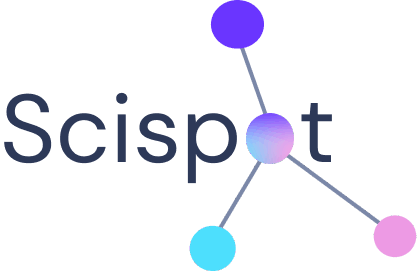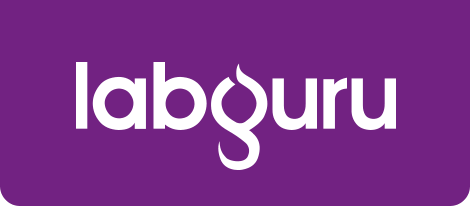Yes, most lab inventory management software is compatible with many devices and platforms. This enables for quick and easy access from cellphones, tablets, laptops, and desktop computers. The software may be accessed by web browsers or a downloadable app, making it available on both iOS and Android smartphones. This feature allows lab inventory to be maintained and updated in real time from anywhere with internet access, enhancing efficiency and accuracy.
List of Best Lab Inventory Management Software
ItemTracker solution for managing laboratory samples. This software offers advanced capabilities such as visual storage mapping, barcode integration, and customizable user permissions. Say goodbye to time-consuming sample tracking, auditing, and data...Read More ItemTracker
CrelioHealth Inventory is solution for efficient inventory management for labs. With real-time data, it enables tracking of stock consumption, orders, suppliers, and expiry, ensuring a smooth workflow. Its digital ledger simplifies managing multiple...Read More CrelioHealth Inventory
Looking for the best sample management software for your life science lab? Look no further than Titian Mosaic. Designed for efficiency and precision, it allows you to easily track and organize all types of samples, from small molecules to DNA and pro...Read More Titian Mosaic
eClinic is a healthcare management software for hospitals and clinics. Boost your organizations growth with our comprehensive platform that offers virtual presence and all the essential tools for streamlined operations. Enhance patient care and optim...Read More eClinic
BIOSPEC - a web-based inventory system developed by DDOTS for research facilities. Our teams vast experience in research software enables BIOSPEC to provide a user-friendly and affordable solution for optimizing bio-repository management. Streamline...Read More BIOSPEC
Biological Speciment, the perfect solution for organizing and managing specimens. Our software is equipped with state-of-the-art features like lifecycle tracking, request management, and efficient search functions, allowing for streamlined operations...Read More Biological Speciment
Atellica - a software solution designed to streamline laboratory processes, enhance diagnostic accuracy, and boost operational efficiency. Its intuitive interface, real-time data analysis, and seamless integration capabilities give users the power to...Read More Atellica
SciNote is a premier electronic lab notebook (ELN) software designed to simplify research procedures and enhance data management. It is a platform recommended by scientists worldwide, equipped with features for compliance, collaboration, and inventor...Read More SciNote
Experience the efficiency and simplicity of Quartzy is a Lab Management System. Say goodbye to the hassle of managing lab supplies and samples, and hello to centralized management and streamlined order requests. Our user-friendly interface comes at n...Read More Quartzy
LANEXO, the premier inventory management solution designed specifically for regulated laboratories. This innovative software, equipped with a user-friendly mobile app and advanced RFID labels, streamlines stock management processes, enhances safety p...Read More LANEXO
BxInventory is a software suite designed by BioInfoRx to simplify animal and breeding data management for research applications. With a proven track record of over 15,000 satisfied users worldwide since 2006, BxInventory provides an efficient solutio...Read More BxInventory
eLabInventory is a laboratory management software, streamlines sample tracking, inventory management, and protocol documentation. With advanced capabilities, it enhances research efficiency, protects data accuracy, and offers flexible hosting solutio...Read More eLabInventory
CryoTrack solution for effortless lab sample tracking. Whether on Windows or the Web, this software can be tailored to your unique requirements with up to 10 separate data sets. Manage vital information, track changes, view activity logs, record assa...Read More CryoTrack
Scispot is a automation software designed for fast-growing life science firms. Our robust platform facilitates seamless teamwork during every stage of research and development, from ideation to experimentation and analysis. With advanced features, te...Read More Scispot
Labguru ELN is an advanced LIMS solution that prioritizes security measures for your lab. With a focus on efficiency, it streamlines tasks like scheduling, diagnosis, and billing for better laboratory management. Its flexible design ensures the safek...Read More Labguru ELN
ChemInventory is a cloud-based solution for streamlined chemical inventory management in laboratories. Simplify stock tracking and order requests with container barcoding, structure searching, and GHS safety information. This secure software is acces...Read More ChemInventory
Vertere is a laboratory inventory management software that revolutionizes tracking and compliance of chemicals, biological materials, and equipment. Its advanced features include real-time access, barcode integration, and regulatory reporting, making...Read More Vertere
Learn More About Lab Inventory Management Software
- What Is Lab Inventory Management Software?
- What Are The Recent Trends In Lab Inventory Management Software?
- Benefits Of Using Lab Inventory Management Software
- Important Factors To Consider While Purchasing Lab Inventory Management Software?
- What Are The Key Features To Look For In Lab Inventory Management Software?
- Why Do Businesses Need Lab Inventory Management Software?
- How Much Time Is Required To Implement Lab Inventory Management Software?
- What Is The Level Of Customization Available In Lab Inventory Management Software?
- Which Industries Can Benefit The Most From Lab Inventory Management Software?
- Conclusion
What Is Lab Inventory Management Software?
Lab inventory management software is an essential tool for any laboratory aiming to improve their inventory tracking procedures. This software serves as a consolidated platform for maintaining stock levels, tracking usage, and monitoring lab supply and equipment expiration dates. It is intended to assist labs manage their inventory more efficiently, decrease waste, and save time and money.
One of the most important characteristics of lab inventory management software is the capacity to track and arrange numerous sorts of supplies, such as chemicals, reagents, glassware, and instruments. This software allows users to construct a thorough inventory list, define stock levels for each item, and receive automatic warnings when stocks are low or about to expire. Another important feature of lab inventory management software is the ability to monitor consumption and patterns.
This enables labs to track which supplies are being utilized and by whom, allowing them to make more informed decisions about future orders and budgets. Furthermore, lab inventory management software can be integrated with other systems like invoicing and ordering, resulting in a streamlined process for lab operations. This interface reduces manual errors and data conflicts, resulting in more accurate inventory tracking and forecasting.
In addition to inventory management, many lab inventory management software packages provide additional features like barcode scanning, batch tracking, and record-keeping for auditing and regulatory compliance. These features offer labs a complete solution for effective inventory management and regulatory compliance. When selecting lab inventory management software, consider ease of use, scalability, integration possibilities, and customer support. It is also critical to examine your lab's specific demands and select software that meets those requirements.
What Are The Recent Trends In Lab Inventory Management Software?
In recent years, laboratory inventory management software has made major advances and gained popularity in the scientific community. These developments were motivated by the need for more efficient and precise inventory tracking and management, as well as the incorporation of new technologies
We will look at the latest trends in lab inventory management software and how they might help your laboratory.
1. Cloud-Based Solutions: One of the most significant changes in lab inventory management software is the transition to cloud-based solutions. These software systems are hosted online, so users can access them from anywhere with an internet connection. This eliminates the requirement for physical servers while lowering maintenance costs. It also provides real-time access to inventory data, which facilitates collaboration among many laboratories and researchers.
2. Integration Of Barcode And RFID: Technology Lab inventory management software is currently being connected with barcode and RFID (Radio Frequency Identification) technology to provide more efficient and accurate inventory tracking. These technologies enable users to swiftly scan and track things, lowering the risk of human mistake and saving time. It also allows for real-time inventory tracking, delivering the most up-to-date stock levels.
3. Automation Of Inventory Management Processes: Another noticeable trend is the automation of inventory management procedures. Artificial intelligence and machine learning breakthroughs have enabled lab inventory management software to automatically track, refill, and rearrange products depending on predefined parameters. This removes the need for human inventory counting and lowers the risk of running out of crucial goods.
4. Mobile Accessibility: The advancement of mobile technologies has also influenced the development of lab inventory management software. Many software solutions now include mobile apps that allow users to view inventory data, scan barcodes, and place orders on the go. This offers flexibility and convenience, particularly for those working in a fast-paced laboratory setting.
5. Customization And Integration: Today's lab inventory management software provides greater customization options, enabling customers to personalize the system to their individual requirements. This includes the ability to create custom fields, tags, and categories to help you organize and track your inventory. Furthermore, several software solutions integrate with laboratory equipment and other software systems to improve workflows and data management.
Benefits Of Using Lab Inventory Management Software
Lab inventory management software provides numerous benefits to laboratories of all sizes. By automating and optimizing inventory processes, this software can save time, eliminate errors, and boost productivity.
Here are some of the major advantages of investing in lab inventory management software:
1. Accurate And Organized Inventory Tracking: Manual inventory tracking systems are time intensive and error-prone. All inventory products and their associated data can be carefully tracked and categorized with lab inventory management software, providing a real-time picture of things in stock, their whereabouts, and other critical information.
2. Cost Savings: By properly monitoring inventory levels and avoiding waste, lab inventory management software can help the laboratory reduce expenditures. This software can help track expiration dates, reducing the need to purchase expired supplies and potentially saving money on replacements.
3. Increased Efficiency: Lab inventory management software, which includes features like barcode scanning and automated notifications for low stock levels, can dramatically enhance inventory management productivity. This helps lab personnel to focus on more vital activities rather than manually maintaining inventories.
4. Improved Data Management: Lab inventory management software provides a consolidated database for storing all inventory-related information, such as item name, quantity, location, expiration date, and more. This facilitates data access and analysis, allowing for more informed decision-making.
5. Regulatory Compliance: Laboratories must follow tight regulatory guidelines, and good inventory management is essential for compliance. Lab inventory management software may help guarantee that all products and chemicals are correctly tracked and stored, lowering the risk of noncompliance.
6. Improved Communication And Collaboration: With this program, lab personnel may communicate and collaborate more effectively. Different teams may access real-time inventory data, making it easier to coordinate and monitor stock levels.
7. Customizable And Scalable: Lab inventory management software may be tailored to the specific demands of a laboratory and scaled up as the facility expands. This makes it an affordable option for long-term use.
Important Factors To Consider While Purchasing Lab Inventory Management Software?
When it comes to choosing lab inventory management software, there are numerous critical elements to consider. This software is critical for tracking and maintaining laboratory supplies, equipment, and materials, so select a dependable and efficient solution that suits your specific requirements.
In this post, we'll go over the most important variables to consider when comparing lab inventory management software.
1. User-Friendly Interface: One of the most significant considerations is the software's ease of use. The interface should be simple and intuitive, allowing laboratory personnel to easily explore and enter data. This not only saves time, but also reduces the possibility of data entering errors.
2. Customization Options: Each laboratory has distinct inventory management requirements. As a result, selecting software that allows for customization to meet your individual needs is critical. This can include the ability to add custom fields, generate reports, and customize workflows based on your lab's procedures.
3. Integration With Other Systems: Ideally, lab inventory management software should work in tandem with other systems like electronic lab notebooks, instrument management software, and accounting software. This will allow for smooth and efficient data transfer between systems, avoiding the need for manual data entry and associated errors.
4. Tracking And Reporting Capability: In order to provide accurate insights into your lab's inventory, the software must have comprehensive tracking and reporting capabilities. This includes real-time monitoring of inventory levels, expiration dates, and consumption. It should also provide customized reports to help you make smart inventory management and purchase decisions.
5. Security And Compliance: Because laboratory data is very sensitive, it is critical to select software that adheres to tight security policies and meets industry laws like as HIPAA and FDA standards. This will protect your sensitive data while still maintaining regulatory compliance.
6. Scalability: As your lab expands, your inventory management requirements will shift. It is critical to select software that can scale to meet your lab's needs, allowing you to add more users, locations, or inventory items without difficulty.
7. Training And Assistance: The software vendor should give extensive training and continuing assistance to help you and your team become acquainted with the software and troubleshoot any issues that may emerge. This will ensure a smooth implementation and effective use of the product. By considering these considerations when selecting lab inventory management software, you can make an informed selection and invest in a system that can efficiently manage and streamline your lab's inventory activities.
What Are The Key Features To Look For In Lab Inventory Management Software?
When selecting Lab Inventory Management Software, a few essential elements should be evaluated to ensure that the software satisfies the unique requirements of a laboratory environment.
Here are some key things to look for:
1. Centralized Inventory Management: The program should support the centralized tracking and management of all laboratory inventory items, such as reagents, consumables, and equipment. This guarantees that all items are properly accounted for and available to all lab team members.
2. Barcode Scanning: The capacity to swiftly enter inventory data by scanning barcodes or using RFID technology can significantly increase inventory tracking accuracy and efficiency. This feature enables for speedier processing while lowering the possibility of human error.
3. Customizable Monitoring And Reporting: Each laboratory has its own set of inventory monitoring and reporting requirements. Look for software that has adjustable fields and reports, so you can tailor it to your exact requirements.
4. Integration With Other Lab Systems: To improve efficiency and eliminate errors, search for inventory management software that connects with other lab systems like LIMS or ERP. This enables seamless data flow while eliminating the need for manual data entry.
5. Real-Time Inventory Updates: The program should be able to offer real-time information on inventory levels and locations. This provides accurate and up-to-date information on what inventory is available and where it is stored.
6. User Access Control: To ensure data security and that only authorized staff have access to sensitive inventory information, seek for software that supports user access control. This feature enables lab administrators to restrict access to certain inventory items and assign authorization levels to individual users.
7. Smartphone Compatibility: In today's fast-paced and technologically advanced world, smartphone compatibility has become an essential component for many lab software solutions. Look for inventory management software that includes a mobile app or can be accessed through a web browser on a mobile device for convenient on-the-go inventory management.
8. Training And Support: Before making a purchase, ensure that the software vendor provides comprehensive training and continuous support to help your staff become acquainted with the product and fix any issues that may emerge. By taking these crucial aspects into account, you can ensure that the Lab Inventory Management Software you choose will effectively satisfy your laboratory's specific needs while also improving inventory management efficiency and accuracy.
Why Do Businesses Need Lab Inventory Management Software?
Businesses in the scientific and healthcare industries handle a huge number of inventory on a daily basis, making it critical to have an effective and accurate inventory management system in place. This is especially true in laboratories, where adequate inventory levels are critical to guaranteeing smooth operations and reliable research results. Lab inventory management software provides a comprehensive solution for streamlining inventory procedures and increasing laboratory efficiency.
First and foremost, lab inventory management software enables firms to conveniently track and manage their inventory levels, which include reagents, chemicals, equipment, and samples. This program allows firms to successfully manage their stock by giving real-time inventory level updates, avoiding overstocking and understocking, and avoiding costly delays in experiments and projects.
Furthermore, lab inventory management software includes capabilities like barcode scanning and automatic data entry, removing the need for manual data entry, which is prone to human mistake. This ensures data accuracy while saving time for lab personnel. Another important feature of lab inventory management software is the ability to track product expiration dates and lot numbers. This prevents the usage of expired or damaged materials while still ensuring regulatory compliance.
In addition to inventory-specific functions, lab inventory management software provides sample tracking, order management, and vendor management capabilities. This enables firms to have a comprehensive understanding of their whole inventory process, from acquisition to disposal. Furthermore, lab inventory management software is frequently connected with other critical systems such as accounting, purchasing, and LIMS (Laboratory Information Management System), giving firms a one platform for all of their laboratory requirements.
Businesses that employ lab inventory management software can save time, cut costs, improve accuracy, and boost production in their labs. It also provides considerable benefits in terms of consistency, regulatory compliance, and correct data for research and audits. Overall, investing in lab inventory management software is essential for any organization in the scientific and healthcare industries that wants to manage its inventories efficiently and stay competitive.
How Much Time Is Required To Implement Lab Inventory Management Software?
The deployment time for lab inventory management software varies depending on the lab's size, program complexity, and quality of training and support supplied. The implementation process might take anywhere from 1 to 3 months, from initial planning to final system deployment. During the planning phase, all stakeholders should be involved to ensure that their needs and requirements are met. This can take from one to two weeks, depending on the availability of critical staff.
After selecting the software, the following step is to configure and customize the system to meet the lab's specific needs and operations. This can take between 2 and 4 weeks, depending on the intricacy of the software and the lab's requirements. Data migration is another critical phase in the installation process, since it entails transferring existing data from the lab's previous inventory system to the new program.
The time necessary for this varies depending on the volume and quality of data to be moved. Finally, the training and testing phases can last anywhere from one to two weeks. It is critical to guarantee that all users are properly instructed on how to use the software, and that any faults or defects are detected and remedied before the system goes live.
What Is The Level Of Customization Available In Lab Inventory Management Software?
One of the most important considerations when selecting lab inventory management software is the level of customization available. The software's capacity to be adapted to your individual demands and workflows can have a significant impact on its usability and performance in your lab.
Here are some key elements to consider when determining the extent of customisation in lab inventory management software.
1. Scalability: The first thing to consider is if the software is scalable to meet the size and requirements of your lab. Can it support the existing number of users, locations, and inventory items in your lab while also accommodating future growth?
2. User Interfaces And Workflows: Customization also includes the ability to alter user interfaces and workflows. Is the software adaptable enough to your laboratory's specific operations and protocols? Can you tailor fields, labels, and layouts to your lab's vocabulary and organization?
3. Integration With Other Systems: To ensure seamless inventory management, software that integrates with other systems, such as LIMS (Laboratory Information Management System) or ERP (Enterprise Resource Planning), is required. Look for lab inventory management software that includes APIs (Application Programming Interfaces) or pre-built connectors to ensure compatibility with your current systems.
4. Customizable Reporting And Analytics: are essential for tracking and analyzing inventory data. Look for software that allows you to build bespoke reports based on your lab's specific needs, as well as real-time dashboards for rapid inventory visibility.
5. User Permissions: Depending on the size and organization of your lab, you may require varying permission levels for each user. A decent inventory management software should let you set up and configure user rights to limit access to sensitive data and functionality.
6. Cloud-Based vs. On-Premise: Determine whether a cloud-based or on-premise solution is better suited to your lab's requirements. Cloud-based software provides greater flexibility and scalability, although on-premise software may provide more customization choices. Determine which choice is best for your lab.
Which Industries Can Benefit The Most From Lab Inventory Management Software?
Lab inventory management software can transform industries, particularly those that rely largely on reliable tracking of lab supplies and equipment. If you're looking for lab inventory management software, you should first determine which sectors will profit the most from this technology.
In this buyer's guide, we've selected the industries that will profit the most from utilizing lab inventory management software.
1. Biotechnology And Pharmaceutical Companies: These companies handle a large amount of laboratory supplies, such as chemicals, reagents, and equipment. Any errors or lost materials can cause costly delays and compromised study results. Lab inventory management software can successfully track inventory levels, expiration dates, and usage history, allowing these businesses to keep tight control over their supplies while streamlining their research processes.
2. Healthcare Institutions: Hospitals, clinics, and other healthcare institutions rely on lab supplies and equipment to offer high-quality patient care. Using lab inventory management software, these facilities can guarantee that they have enough medical supplies and equipment to fulfill patient demand. Furthermore, the software may help track medicine expiry dates and manage supply levels, reducing waste and increasing efficiency.
3. Food And Beverage Industry: Food and beverage enterprises must adhere to tight quality control and safety laws. These companies can use lab inventory management software to track the contents and materials used in their products and verify they meet industry standards. It also enables them to monitor inventory levels and limit the danger of supply shortages disrupting production.
4. Research Institutions And Academic Labs: Accurate inventory tracking and management is critical in research and academic labs to support ongoing experiments and research projects. Lab inventory management software can give real-time inventory data, making it easier to track supplies and refill them as needed. It can also help lab members communicate and collaborate more effectively by providing a consolidated inventory management platform.
5. Oil, Gas, And Energy Industry: Businesses in the oil, gas, and energy industries use a variety of specialized equipment and materials in their operations. They can use lab inventory management software to track and manage these things more efficiently, lowering the risk of equipment downtime and costly delays. It also enables them to examine consumption patterns and make more informed decisions about future purchases and inventory.
Conclusion
To summarize, selecting the correct Lab Inventory Management Software is critical for increasing the efficiency and productivity of your laboratory operations. With so many software solutions available on the market, it is critical to carefully analyze your individual goals and requirements before making a choice. First, evaluate the software's features and operations, such as inventory tracking, data monitoring, and reporting capacities.
It is critical to select software that integrates effortlessly with your existing systems and provides a user-friendly interface for your staff. Furthermore, evaluate the software's scalability and flexibility, as your lab's inventory requirements may alter over time. A cloud-based solution provides real-time updates and access from anywhere, making it an ideal alternative for labs with several sites or remote personnel.
Another key thing to consider is the amount of customer support and training given by the software vendor. A reliable support team can ensure a smooth implementation and provide assistance in the event of any technical challenges. Finally, thoroughly consider the cost and return on investment of the program. While a lower-cost alternative may appear appealing, it is critical to evaluate the long-term advantages and potential savings that complete and effective lab inventory management software may provide.
To summarize, by properly assessing the features, compatibility, support, and cost, you can make an informed decision and select the finest Lab Inventory Management Software for your laboratory requirements. We hope this buyer's guide has provided useful information and assisted you in your search for the ideal software.
Lab Inventory Management Software FAQ's
Can Lab Inventory Management Software Be Accessed Across Multiple Devices And Platforms?
Is Lab Inventory Management Software Future-Proof And Adaptable To Emerging Technologies Like AI, Blockchain Or IoT?
Lab inventory management software has continually evolved and adapted to new technologies. With the growing popularity of AI, blockchain, and IoT technologies, developers are implementing them into their software to make it more future-proof and adaptable.
These developments lead to improved accuracy, efficiency, and automation while managing lab inventory. Furthermore, software engineers maintain compatibility with changing technology, allowing laboratories to adopt new tools without having to overhaul their entire system.
Is There A Free Trial Offered To Assess Lab Inventory Management Software Before Committing?
Yes, many Lab Inventory Management Software vendors provide a free trial period of 7 to 14 days to evaluate their software before committing to a purchase. This enables lab managers to evaluate the software's features, functionality, and usability to determine whether it satisfies their requirements. It is recommended that you take advantage of the free trial offer before making a decision to invest in Lab Inventory Management Software.
Does Lab Inventory Management Software Offer Data Security Features And Meet Regulatory Compliance Standards?
Yes, most lab inventory management software alternatives include data security capabilities and meet regulatory requirements. These features may include secure user logins, data encryption, and activity logging to monitor inventory changes. In addition, several software alternatives comply with laws such as GLP, GMP, and 21 CFR Part 11. It is critical to carefully study the features and specs of any software to ensure that it fulfills your specific compliance requirements.
Can Lab Inventory Management Software Integrate Seamlessly With Existing Tools And Platforms?
Yes, most lab inventory management software can interact effortlessly with other tools and platforms. This ensures a smooth transition with minimum disturbance to your lab's everyday operations. Integration allows the software to interface and share data with regularly used tools like LIMS and accounting systems. This increases inventory management efficiency and accuracy while decreasing the need for human data entry and associated errors.




















